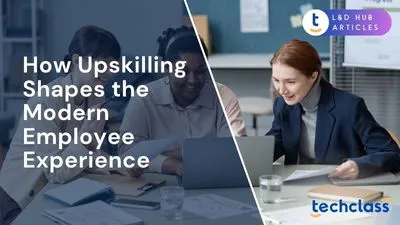Empowering Frontline Teams Through Continuous Learning
Frontline employees, those on the shop floor, in the field, or interacting directly with customers, are the face of an organization. Their knowledge and engagement (or lack thereof) can make or break customer experience and operational success. Yet these critical team members have historically faced underinvestment in training and development, leading to high turnover and skill gaps. A recent report found that nearly two-thirds of frontline workers would extend their tenure by six years if employers offered better learning and career development opportunities[1]. This is striking given that in sectors like retail, annual frontline employee turnover has long exceeded 60%[2]. Clearly, building a culture of learning among frontline teams isn’t just a “nice to have” – it’s a strategic imperative. Companies that foster continuous learning on the frontline see improved service quality, higher morale, and greater adaptability. In an era of rapid change and labor shortages, creating a learning culture for frontline staff can boost retention and ensure your workforce is ready to meet new challenges.
In this article, we’ll explore why a learning culture matters for frontline teams, the unique challenges involved, and practical strategies (with real examples) to nurture continuous learning on the frontline. By investing in your frontline employees’ growth, you invest in the long-term success of your business.
The Value of a Learning Culture for Frontline Teams
Cultivating a learning culture means creating an environment where learning is an ongoing, expected part of the job rather than a one-off training session. This cultural shift is particularly valuable for frontline teams. Why? Because when frontline employees are continuously learning, everyone wins. Organizations see tangible performance improvements, companies that invest in frontline training report faster new-hire ramp-up times, fewer errors on the job, and higher customer satisfaction scores. Employees, in turn, feel more confident and empowered in their roles. They are better equipped to handle customer issues, use new tools, and follow evolving procedures.
Importantly, a strong learning culture drives engagement and retention. Frontline staff who feel their employer is investing in their growth are far more likely to stay and put in discretionary effort. The LinkedIn Workplace Learning Report 2025 highlighted that ample training and development opportunities are among the top drivers of employee engagement and retention for younger workers entering the workforce. In other words, if frontline employees see a future for themselves through skill-building and advancement, they’ll be more loyal to the company. This can significantly reduce the costly cycle of hiring and training new staff only to lose them within months. A culture of learning also fosters resilience, when market conditions or technologies change, frontline teams with a learning mindset can adapt quickly, keeping the business agile. In short, making continuous learning part of the frontline employee experience leads to better performance today and a stronger, more stable workforce tomorrow.
Challenges in Cultivating Learning on the Frontline
Building a learning culture among frontline teams isn’t without hurdles. Frontline roles often involve hectic schedules, shift work, and little desk time. Pulling employees off the floor for lengthy training sessions can be impractical. Tight staffing means it’s hard to carve out time for development without disrupting operations. There are also logistical challenges – many frontline workers don’t have dedicated computers or corporate email, making it harder to reach them with traditional e-learning or communications. As a result, companies have long defaulted to minimal, one-size-fits-all training (e.g. a rushed orientation, an occasional safety briefing), which may not truly engage or upskill the frontline workforce.
Another challenge is mindset. Some organizations have viewed frontline positions as transient “high-turnover” roles unworthy of heavy investment. This becomes a self-fulfilling prophecy: when employees sense there’s no growth or future in their job, they leave, reinforcing the perception that investing in these employees is futile. Overcoming this bias requires recognizing the long-term ROI of developing frontline staff, rather than seeing training as a wasted cost. In reality, providing learning opportunities can transform frontline roles from dead-end jobs into desirable careers. It’s also important to note the diversity of frontline employees. They range from young adults in their first jobs to seasoned workers; from tech-savvy individuals to those with limited formal education. A one-size training approach won’t suit such varied learners. Companies must adapt content and delivery to different learning styles and starting skill levels.
Lastly, engagement can be a challenge, traditional top-down training (like dense manuals or slide presentations) often fails to captivate busy frontline workers. Without an engaging approach, learning initiatives might be met with eye-rolls or apathy. Frontline employees crave practical, relevant development but it needs to be delivered in a way that fits into their world. Understanding these challenges is the first step in addressing them. Fortunately, innovative solutions are emerging to make learning on the frontline more accessible and effective.
Strategies to Foster Continuous Learning on the Frontline
Despite the challenges, there are many effective strategies leaders can use to build a robust learning culture for frontline teams. Below are key approaches, along with tips for making them work in a frontline context:
- Lead by Example and Set the Tone: Building a learning culture starts from the top. Leaders and managers should openly champion continuous learning – for example, by sharing what new skill they’re learning or allocating time in team meetings for knowledge sharing. When frontline employees see managers taking development seriously, it sends a powerful message. Encourage store or site managers to coach their teams daily and celebrate learning wins. Equally important is creating a psychologically safe environment where frontline staff feel comfortable asking questions and even making mistakes as they learn. If employees fear punishment for not knowing something, they won’t embrace new learning. Leadership must foster a supportive atmosphere that treats mistakes as opportunities to improve rather than reasons for blame.
- Make Learning Bite-Sized and Accessible: To fit learning into busy frontline roles, meet employees where they are. Leverage microlearning – short, focused lessons that can be completed in 5-10 minutes or less. Brief how-to videos, interactive quizzes, or mobile learning apps allow staff to learn during natural lulls (like slow periods or breaks) without leaving the workplace. Many frontline workers primarily use smartphones, so ensure training content is mobile-friendly and on-demand. In fact, industries with large deskless workforces have seen a surge in mobile-based learning adoption to reach employees effectively[3]. The content itself should be practical and immediately relevant to daily tasks (e.g. a quick module on how to handle a new product or a safety update). By making learning convenient and chunked into digestible pieces, you enable continuous development even in a fast-paced, time-strapped environment. In an era of short attention spans, the more bite-sized, the better – this keeps frontline learners engaged without overload.
- Emphasize On-the-Job and Peer Learning: Frontline employees often learn best by doing and by watching peers. Harness that by structuring more on-the-job training and mentoring. Pair new hires with experienced buddies for side-by-side learning during real work. Encourage seasoned staff to pass on tips and knowledge – this not only helps novices upskill faster but also empowers veterans as teachers. Creating peer-to-peer learning networks (formally or informally) can greatly enhance knowledge sharing. For example, short daily huddles or “toolbox talks” at the start of a shift allow team members to discuss recent learnings or solve problems together. Such peer interactions build a collaborative learning environment where it’s normal to ask colleagues for help or to demonstrate a new technique. Organizations can also implement mentorship programs, where high-performing frontline employees are given roles as training leads or coaches. This not only spreads know-how, it also recognizes and rewards those employees’ expertise – reinforcing the learning culture. On-the-job development is highly effective because it’s hands-on and directly tied to the skills needed, with no need to pull workers off the floor for hours.
- Leverage Technology and Gamification: Modern learning technology can make frontline training more engaging. Many companies use gamified learning platforms, turning training modules into quizzes, challenges, and competitions that tap into employees’ natural motivation. Gamified learning experiences can transform training from a mundane obligation into an enjoyable, competitive activity that boosts engagement[1]. For instance, a retail chain might run a customer service challenge game where associates earn points or badges for completing scenario-based lessons on handling difficult customers. Leaderboards between locations or teams add a friendly competitive spark and encourage participation. This approach not only makes learning fun, it also fosters a culture of collaborative learning, as employees share tips to score higher and help each other succeed[1]. Beyond gamification, consider using interactive video scenarios, simulations, or even augmented reality for hands-on practice (for example, simulating a machinery repair). These tools cater to different learning styles and can improve knowledge retention through interactivity. Technology also enables adaptive learning – platforms can personalize training content to each employee’s role, knowledge gaps, or learning pace. By investing in user-friendly learning tech tailored for frontline use (mobile apps, kiosks, etc.), companies signal that continuous learning is a priority and make it easier for employees to engage with development on their own terms.
- Recognize and Reward Learning and Growth: To firmly embed a learning culture, reinforce it through recognition and incentives. Acknowledge frontline team members who pursue learning – this could be as simple as a shout-out in the staff newsletter or as formal as an “Employee Learning Champion” award. Tie skill development to career advancement pathways: show employees that by gaining new skills, they become eligible for promotions, raises, or specialized roles. When frontline workers see a clear career development path, their roles feel more like careers than dead-end jobs. Some organizations offer financial incentives or bonuses for completing certain training certifications. Others might grant perks (like preferred shifts or additional time off) as a reward for learning achievements. Even gamified programs can include real-life rewards for top learners (small prizes or company swag, for example). The key is to send the message that learning is valued. Constructive feedback and coaching should also be part of this reward system – when employees try to learn a new skill, managers should provide supportive feedback and guidance. Over time, these practices create a positive feedback loop: employees are motivated to learn because it’s appreciated and leads to tangible benefits, which further strengthens the culture of continuous improvement.
By implementing these strategies in combination, an organization creates the conditions for frontline learning to thrive. It’s important to remember that building a learning culture is a journey, not an overnight switch. Solicit feedback from frontline teams about what training they find helpful and what barriers they face, then refine your approach accordingly. With consistent leadership support and thoughtful design, even the busiest frontline workplace can become a place where learning happens every day.
Real-World Examples of Frontline Learning Culture
Many leading companies have recognized the payoff of investing in their frontline workers’ growth. Here are a few real-world examples of initiatives that build a learning culture among frontline teams:
- Walmart – The Walmart Academy: Retail giant Walmart in 2022 launched a global Walmart Academy program to provide comprehensive training for its 2.3 million associates worldwide[4]. This initiative offers a blend of digital and in-person learning, covering everything from on-the-job retail skills to leadership development and even well-being courses[4]. Since the first Walmart Academy opened in 2016, U.S. associates completed over 2.4 million trainings (ranging from learning cake decorating techniques in the bakery to emerging roles like InHome delivery)[4]. By consolidating all training and development under one umbrella, Walmart created one of the world’s largest learning ecosystems, sending a clear message that continuous learning is part of every associate’s career. Notably, Walmart also offers academic opportunities to its frontline staff – the Live Better U program pays 100% of college tuition and books for employees, enabling even entry-level associates to earn degrees and grow within or beyond the company[4]. The result is higher employee engagement and a stronger pipeline of talent for supervisory roles. Walmart’s massive investment shows that even at a huge scale, building a learning culture on the frontline is achievable and beneficial.
- Amazon – Career Choice Education Program: Amazon, which employs hundreds of thousands of hourly fulfillment center and operations workers, has committed over $1.2 billion to upskilling its frontline workforce through 2025. A cornerstone of this effort is the Career Choice program, which offers fully funded education for front-line employees – from high school diploma programs to technical certifications and bachelor’s degrees[5]. As of 2022, more than 750,000 U.S. Amazon employees became eligible for free college tuition through this program, with Amazon pre-paying tuition and fees so that cost is no barrier[5]. Importantly, employees can start using this benefit after only 90 days on the job, and there’s no obligation to remain with the company after completing a degree. In Amazon’s view, investing in employees’ broader education – even if some graduates eventually leave – creates a more engaged, skilled workforce in the meantime, and many do grow into higher roles within the company. Amazon has even built onsite classrooms at some warehouses and partnered with educational providers to make learning convenient[5]. So far, over 80,000 employees worldwide have participated in Career Choice, and Amazon reports seeing firsthand how it transforms workers’ lives and careers[5]. This is a prime example of fostering a learning culture by empowering employees with opportunities far beyond their current job duties.
- Starbucks – College Achievement Plan: In the food service sector, Starbucks has been widely praised for its innovative approach to frontline development. Through the Starbucks College Achievement Plan (launched in 2014), the company offers 100% upfront tuition coverage for eligible U.S. employees (“partners”) to earn a first-time bachelor’s degree online from Arizona State University[6]. This program is open to part-time and full-time baristas and store supervisors, making higher education accessible to those on the front lines of the coffee business. The results have been remarkable: over 16,000 Starbucks employees have graduated with degrees since the program’s inception, and around 26,000 more are currently enrolled in courses[6]. Partners can choose from 180+ degree programs, and they are not required to stay at Starbucks after earning their diploma[6] – though many do, moving up into management or corporate roles thanks to their new credentials. Starbucks reports that participating employees are promoted at roughly twice the rate of their peers, and 75% of graduates see career growth either within Starbucks or in new fields after finishing their degree[6]. By investing in education, Starbucks cultivates a culture where learning and self-improvement are part of the company’s identity. Frontline workers feel valued as more than just a pair of hands serving coffee; they see the company is willing to invest in their future. This strategy has improved retention and engagement, and it burnishes Starbucks’ reputation as an employer that genuinely cares about employee development.
These examples demonstrate that building a culture of learning among frontline teams is not only possible, but also yields significant benefits. Whether it’s a retail corporation or a service business, the core idea is the same: give frontline people the tools to grow, and the company will grow along with them. Smaller organizations may not have billion-dollar budgets for training, but they can adopt the same principles on a suitable scale – for instance, by offering tuition reimbursement, creating a mentorship program, or using a low-cost mobile learning app to deliver bite-sized training. The key takeaway is that frontline employees in any industry respond positively to employers who invest in their development. When you treat your frontline staff as knowledge workers and future leaders in their own right, you nurture more loyalty, better customer service, and a stronger talent bench for promotions.
Final Thoughts: Nurturing Growth on the Frontline
Building a culture of learning among frontline teams requires commitment, creativity, and often a shift in mindset – but the rewards are well worth the effort. Frontline employees who are encouraged to learn continuously become more engaged in their work and provide higher quality service. They feel valued and empowered, which in turn reduces turnover and its associated costs. For the organization, a knowledgeable and agile frontline workforce can adapt quickly to new challenges, whether it’s adopting a new technology, meeting compliance changes, or responding to evolving customer expectations. In essence, cultivating continuous learning at the frontline translates to greater operational excellence and innovation from the ground up.
It’s important to remember that nurturing a learning culture is an ongoing journey. Start by addressing immediate needs (for example, closing key skill gaps or introducing a mobile learning platform for quick training updates), but also plan for the long term. Solicit feedback from your frontline teams about what helps them learn best and what barriers still exist – this inclusive approach will make them feel heard and further reinforce the culture you’re building. Celebrate the successes, like improved performance metrics or employees rising through the ranks thanks to newfound skills. Those stories will inspire others and solidify learning as a core value of your team.
In today’s competitive environment, organizations simply cannot afford to neglect the development of their frontline staff. As we’ve seen, even traditionally high-turnover industries can transform their workforce stability and customer satisfaction by investing in people. The companies that thrive are those that view learning as a strategic investment in human capital, not an expense. By building a robust learning culture on the frontline, you create a win-win scenario: employees grow in their careers, and the business gains a more capable, committed workforce. Empowering the people at the front lines to learn and evolve is ultimately one of the best ways to drive success – for them, for your customers, and for your organization’s future.
FAQ
Why is building a learning culture important for frontline teams?
It improves service quality, boosts employee engagement and retention, and helps teams adapt quickly to change and technology.
What are common challenges in fostering learning among frontline workers?
Hectic schedules, shift work, lack of access to devices, mindset biases, and diverse learning needs can hinder continuous learning.
Lead by example, provide microlearning, encourage peer and on-the-job training, leverage technology, and recognize learning efforts.
Can you give examples of companies successfully building a frontline learning culture?
Walmart, Amazon, and Starbucks have implemented large-scale training programs, tuition reimbursement, and degree opportunities for frontline staff.
How can organizations sustain a culture of learning over time?
By soliciting employee feedback, celebrating successes, integrating learning into career paths, and maintaining leadership commitment.
References
- Frontline Employee Training Plays Key Role in Engagement and Customer Satisfaction – People Managing People. https://peoplemanagingpeople.com/learning-development/frontline-employee-training/
- How retailers can attract and retain frontline talent amid the Great Attrition – McKinsey & Company. https://www.mckinsey.com/industries/retail/our-insights/how-retailers-can-attract-and-retain-frontline-talent-amid-the-great-attrition
- How to build a training strategy for the frontline + free template – Axonify Blog. https://axonify.com/blog/training-strategy/
- Walmart Launches One Global Walmart Academy To Help 2.3 million Associates Build and Grow Their Careers – Walmart News. https://corporate.walmart.com/news/2022/06/02/walmart-launches-one-global-walmart-academy-to-help-2-3-million-associates-build-and-grow-their-careers
- Amazon pays college tuition for front-line employees – About Amazon News. https://www.aboutamazon.com/news/workplace/amazon-to-pay-college-tuition-for-front-line-employees
- Starbucks College Achievement Plan Propels Thousands of Partners Forward – Starbucks Stories. https://about.starbucks.com/starbucks-college-achievement-plan
Weekly Learning Highlights
Get the latest articles, expert tips, and exclusive updates in your inbox every week. No spam, just valuable learning and development resources.



